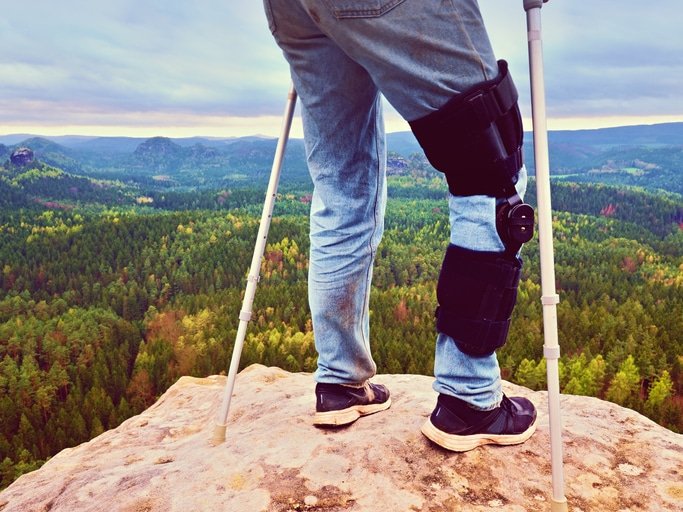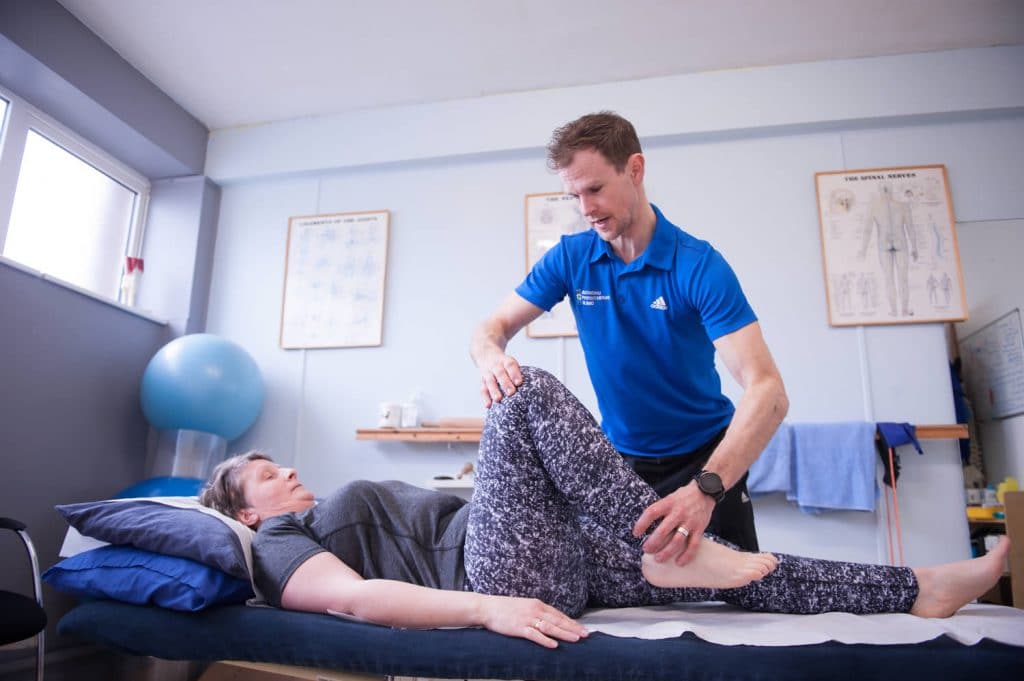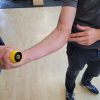What is a knee ligament?
The ligaments in your knees are like tough elastic bands, both stretchy and durable. They connect your femur to your tibia, but serve a number of other functions, chiefly excessive movement of your joints. If one or more of your knee ligaments gets damaged, the entire knee joint may feel unstable, and with more serious injury become unstable. If a ligament is torn, as well as producing some extremely painful symptoms, there’s a possibility that surgery will be required. The first step before the mention of the ‘S word’ is to have it assessed by a sports physio, engage in a treatment and rehab plan each maximising the healing and stability of your joint respectively. Thankfully not all knee ligament damage actually require surgery despite significant pain and disability. If you lead an active lifestyle, or you’re of an age where your knee has a lot of mileage, then we at APC Physio & Sports Clinic are here to support you.
How do knee ligaments work?
You have four major knee ligaments, and they each serve a different function:
- The Anterior Cruciate Ligament, or ACL, controls the rotation and forward movement of your shin
- The Posterior Cruciate Ligament, or PCL, controls your shin’s backward movement
- The Medial Collateral Ligament, or MCL, gives stability to the inner knee
- The Lateral Collateral Ligament, or LCL, gives stability to the outer knee
Damage to Knee Ligaments is a real risk for active people
Many kinds of sports or daily exercise place strain or stress on knee ligaments, which in turn can cause them to be stretched out of shape and become sensitive and even painful. This happens because of biomechanical issues due to suboptimal movements and/or core control. Symptoms of a torn ligament may include:
- A popping or snapping noise at the time of stress or impact
- Acute swelling or pain in your knee
- Tenderness to touch
- An inability to use your knee normally, and compensating for this with hobbling or irregular movements
How might the different knee ligaments be torn or injured?

If you regularly participate in sports, it is most common to injure or tear your MCL and/or ACL. You place yourself at a higher risk of doing this if your feet remain planted one way whilst your knees turn the other. Does your daily lifestyle mean that you twist and turn your body a lot? We regularly encounter GAA and Rugby players with a torn ACL, but skiers, runners, – and especially cross country runners are susceptible to this painful and annoying type of knee ligament injury.
The Posterior Cruciate Ligament injury happens in collisions in sports or due to falling and an impact force driving the shin backwards. The PCL is found at the back of your knee.
The medial Ligament injury is more common than PCL and ACL and responds to treatment and rehab even if it’s a grade 3 sprain- once managed and treated correctly from the start- hence avoiding surgery. Stretch and tear injuries to these ligaments are usually caused by a blow to the side of the knee: again, picture a fall from a bike, off a horse, or in a car accident, with sudden impact.
What do knee ligament injuries feel like? What can you do about them?
Often, knee ligaments that have merely been stretched require a knee brace and a few careful exercises. We can tailor a program or prescribe a class to suit your needs. Occasionally, even a torn ligament can be treated in this manner. However, it is important to resolve the problem before it worsens. Many of us who regularly get active outdoors have been victims: we’re travelling down a steep slope, perhaps on muddy, slippery grass, or over rocks and boulders, we bend in an unnatural fashion and our knee simply gives way beneath us. It can be awkward and excruciating to get up. The most likely cause of such an injury is a torn ACL, but the medial ligament and joint capsule itself may be affected with the ACL in more severe cases. The ACL in many ways is the most critical of the knee ligaments: it helps support and stabilise the knee and connects the tibia and femur.
Lateral Collateral Ligament tears occur, in general, less frequently. An LCL strain or tear can cause instability or even immobility, as well as potentially severe pain on the outside of your knee. The LCL is designed to control sideways motion of your knee, to help minimise irregular movements that can damage your body.
Posterior Collateral Ligament tears or strains are relatively common but often stand a good chance of healing without surgical intervention. Because the PCL’s role is to regulate how far the Tibia translates in a backwards direction, a traumatic injury on a bent knee is likely to create problems with this ligament.
What to do if you injure your knee ligaments

During the early stages of sustaining a suspected injury to the ligaments of your knee, the knee and all surrounding tissues should be closely monitored. If physical activity hurts, it should be avoided where possible. The first and most important thing to do is to compress and support the joint, keeping it elevated with an ice pack. Activity should be avoided if very painful or until your knee has been assessed by a sports physio to determine the exact extent of the injury. Despite common practice, anti inflammatories should be avoided for the first 72 hours to allow natural healing to take place.
How a knee ligament is treated, and why you should consult a physiotherapist or sports clinician
If a ligament is completely torn, it is unlikely you will be able to put any pressure on your knee, and it may give way suddenly or without warning. If you are walking, bending or going up and down stairs, or taking part in other sporting activities, this may be extremely inconvenient and result in further accident.
Many of us simply learn not to trust that particular knee or to live with the pain. If you compete in high level sports, for obvious reasons this is not an effective solution and will likely result in the problem worsening or developing other complications.
If you are suffering from osteoarthritis, a knee ligament tear or strain can complicate the situation. You want to be looking at ways of strengthening your body, permitting yourself to be active for longer, not weakening or damaging it. This can hinder progress.
With careful rehabilitation, a knee ligament tear will heal without resorting to surgery, but it’s extremely important to know what you’re doing.
Even if surgery is advised, you should consider APC physio to do some prehabilitation beforehand. Prehab is often advised by surgeons and physios and helps get the surrounding supporting muscular systems working.
What does knee ligament rehab involve?
You might feel tight, you might be in pain, you might be placing stress on other muscles by compensating for a knee you don’t trust. It’s important to get that sorted as quickly as possible. The garden can’t wait, nor can your training plan. But above all, your body needs fixing for your personal wellbeing.
To begin with, book a consultation. We can carry out a gentle and thorough examination of your knee. We can work out how it can move and how it can’t, and what those knee ligaments need to be whole and functioning again. We offer tailored rehabilitation exercises, designed to strengthen the ligament and knit it together again.
A few quick examples of knee rehab exercises we might prescribe may include, but are not limited to, wall squats, step-ups, a side-lying leg lift or passive knee extension. And of course, knee range of motion exercises (bending and straightening known as flexing and extending respectively). Remember that what we do is case specific: it depends on how and where you injured your knee, your own strength and abilities, and how rapidly your knee ligaments are able to heal themselves.
Follow up consultations are also available by appointment, and for as long as is required to get back to where you were before the injury. Again, this is totally dependent on your own activity levels and goals.
Initially, your body may be sensitive to strenuous exercises. Tenderness in your knee after a session of physiotherapy is normal. The detail is case specific, and we pay attention to that detail. We will carefully monitor progress with your knee ligaments, with the ultimate aim of restoring full function. The steps to get there are our 5 step process. Relieve pain, build strength and control, educate to understand, return to activity, back to competition or work.
A knee brace may also be prescribed, to provide the support the damaged elastic bands bolstering your joints are temporarily unable to. This will help protect your knee against the strain of activities that you can’t avoid taking part in. We at APC appreciate that if sports is an essential part of your life, you’ll be extremely reluctant to lose fitness through inactivity. That said, it’s important to accept that where ligament injuries are concerned, a little may be a lot with getting you back in action.
Programs for pre-and post surgery
As with anything, torn ligament in knee surgery may be the only option. This may involve a tendon graft from one of your healthy tendons, for example, in the knee cap or hamstring, which will help hold your knee joint together. This is an autograft. In cases where the tendon is supplied from an organ donor, the process is known as an allograft.
As with anything, there are risks, which may include:
- Limited range of motion in the knee joint, as well as swelling
- Increased motion in the knee as the graft stretches
- Bleeding or infection
- Blod clots
We’re here to help prevent any of those things from happening.
Pre-habilitation may be a good idea before your operation, to work leg and knee muscles that may have been in pain for some time, preventing muscle wastage referred to as atrophy.
Once your new ligament is in place, it requires careful rehabilitation and guidance focusing on optimal healing and joint ROM in the early stages, building strength and improving balance in the middle stages and when the time is right, getting the body back into running and sports specific conditions before being fully fit and safe to get the green light to return to normal activities or competition. If you embark on one of our tailored rehab programs post-operation, with perseverance and commitment, your knee and all its ligaments will have the best possible chance to be back to its best.


